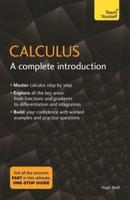Publisher's Synopsis
BACKGROUND Sir Isaac Newton hrought to the world the idea of modeling the motion of physical systems with equations. It was necessary to invent calculus along the way, since fundamental equations of motion involve velocities and accelerations, of position. His greatest single success was his discovery that which are derivatives the motion of the planets and moons of the solar system resulted from a single fundamental source: the gravitational attraction of the hodies. He demonstrated that the ohserved motion of the planets could he explained hy assuming that there is a gravitational attraction he tween any two ohjects, a force that is proportional to the product of masses and inversely proportional to the square of the distance between them. The circular, elliptical, and parabolic orhits of astronomy were v INTRODUCTION no longer fundamental determinants of motion, but were approximations of laws specified with differential equations. His methods are now used in modeling motion and change in all areas of science. Subsequent generations of scientists extended the method of using differ ential equations to describe how physical systems evolve. But the method had a limitation. While the differential equations were sufficient to determine the behavior-in the sense that solutions of the equations did exist-it was frequently difficult to figure out what that behavior would be. It was often impossible to write down solutions in relatively simple algebraic expressions using a finite number of terms. Series solutions involving infinite sums often would not converge beyond some finite time.












